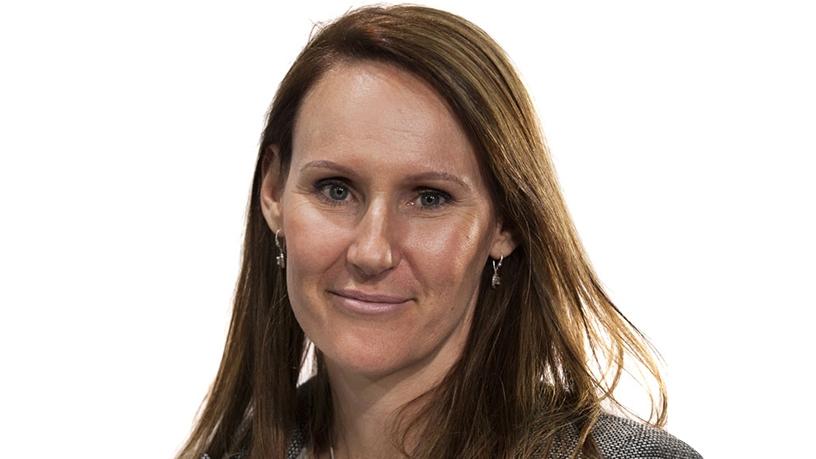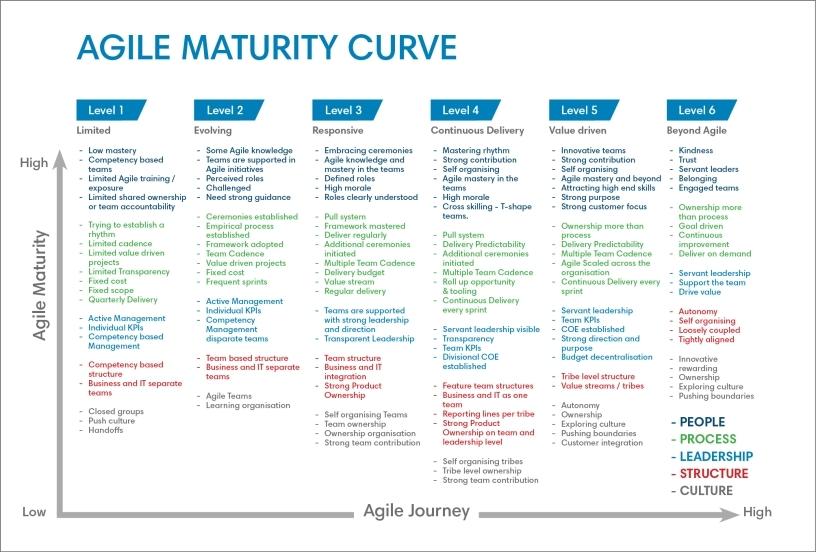
Have you ever wondered just how far you could take your business with an Agile transformation?
I often get asked this question by clients that have undertaken to transform their businesses with Agile, but while Agile is indeed a transformative process, it's also far more than most companies realise when they sign on for the ride.
Agile is not just an IT framework. It's more than just a 'new way' of doing projects. In fact, when I speak of Agile, I'm referring to five fundamental and very different aspects of the concept as a whole: people, process, leadership, structure and culture.
So, how far can you go with Agile? Before I can answer the question, let's first consider these five pillars of Agile in more detail.
People
This is probably the easiest aspect to grasp and simply speaks to how we treat one another and how we view our people and staff as an Agile business. Agile is totally people-focused, empowering and liberating, so this pillar is key to the success of an Agile way of working. Agile enables people to be fully engaged, at their best performance and responsive.
Process
Agile is not linear. There are different frameworks and methodologies to choose from, all of which form part of the process we ultimately decide to follow. These frameworks are there as a guide to help us reach our goals as an Agile organisation. The purpose of the various frameworks is to get us into a habit of doing things differently and to be more relevant to the market and responsive to change.
Leadership
Agile defines leadership as the positive, empowering and supporting influence you have on people, and the feedback received in return. This only occurs within the context of a relationship. In contrast, active management is focused more on what you can get from people because you pay them.
Structure
Agile calls for an organisational structure change where people are loosely coupled but tightly aligned, thus able to make lower level decisions while staying consistent in what we are trying to achieve as a team. As long as the vision is shared, it's up to the team to find a solution and drive the delivery.
Surprisingly, most of the change will come with the 'softer' aspects of Agile: how you treat people, enable people, lead people.
Culture
Probably the most important but least understood of all the pillars, culture speaks to factors such as autonomy, ownership, freedom and innovation. A strong, agile culture exists when direction doesn't need to be given on a daily basis, only guidance since the vision and goals are shared with the team in context. Agile breeds a no-fear culture, where the business through its people isn't afraid to fail to succeed.
Now that we have a handle on the five pillars that make Agile what it is, let's look at the three components that support every Agile transformation: mastery, purpose and autonomy.
Mastery
You want to enable staff to master this thing called Agile, what it is, and what it's not; what it means to the organisation, the governance needed to steer the course, and ultimately how to navigate the new Agile business. Things like Agile training, consulting sessions, directions and transparency during the journey are key.
Purpose
There's a purpose behind every Agile transformation, programme and project, not only at an organisational level but also on a personal and interpersonal one. There's an overarching purpose: to make the business more successful, or to break into new markets, for example, and also a softer purpose: to make a difference in people's lives or to make it easier to achieve their career goals.
Whatever the purpose, it's important that people buy into it and that it is common knowledge. I've often heard of people who gave of their time or joined organisations for free because they bought into its purpose and what it was trying to achieve, simply to be part of it.
Autonomy
This is self-explanatory, and also self-perpetuating. If you've mastered Agile and have a well-defined purpose, you become autonomous based on trust. As a leader, I share the value of appointing people you trust, and trust them to get the job done.
Now that we understand how an Agile transformation works in relation to the five pillars of Agile, we can start to think in terms of Agile maturity. Companies undergoing an Agile transformation are typically graded by where they are on the Agile Maturity Curve. There are six grades along the curve: limited, evolving, responsive, continuous delivery, value-driven and beyond Agile.

All but a small number of companies starting their Agile transformation journey or setting off from a large and cumbersome legacy base find themselves at a level one (limited) grade. Even fewer will ever go beyond Agile, which today is epitomised by the likes of Google, Facebook, Apple, Spotify and other industry pioneers that have redefined what it means to be Agile. Most companies fall somewhere in-between.
Like most things in Agile, there's no hard and fast rule on what makes one company 'responsive' and another 'value-driven'. There's an old saying that says 'you don't know what you don't know'. Most Agile 'sponsors' are also high-level managers that have been with the organisation for a long time and don't have a context on what should be done differently to how it's always been done. Often the company's people and processes are very mature, but the leadership, in Agile terms, is not. Alternatively, everything else is in place, but the organisational culture is keeping the business anchored.
This is where astute mentorship is key, because Agile maturity isn't just about expensive training and leadership courses, but rather focused on coaching in the areas that need strengthening or alignment. Looking at the Agile Maturity Curve will give you a better idea of what the end goal looks like and focus the budget appropriately. Sometimes it is more spent on change management and influencing the culture, as appose to Agile training and coaching.
Surprisingly, most of the change will come with the 'softer' aspects of Agile: how you treat people, enable people, lead people. An Agile way of working in an Agile organisation often lies in finding the right level of collaboration and communication. Sending your staff on an Agile framework course won't teach them how to be Agile. Soft training and strengths-based training will assist in this area.
Take a longer look at the organisations that have truly gone beyond Agile, and they'll all put their success down to the 'softer' aspects of kindness and trust, a sense of belonging and ownership instead of a process or management focus. It's very different to the conventional way of thinking, and how we traditionally get people to move in a certain direction, but there's also no question that it works.
So how far can you take your business with an Agile transformation? Tread softly, and before you know it, you will have a friendly, learning organisation which is engaged in the organisational purpose: operating as high performing teams.
Share